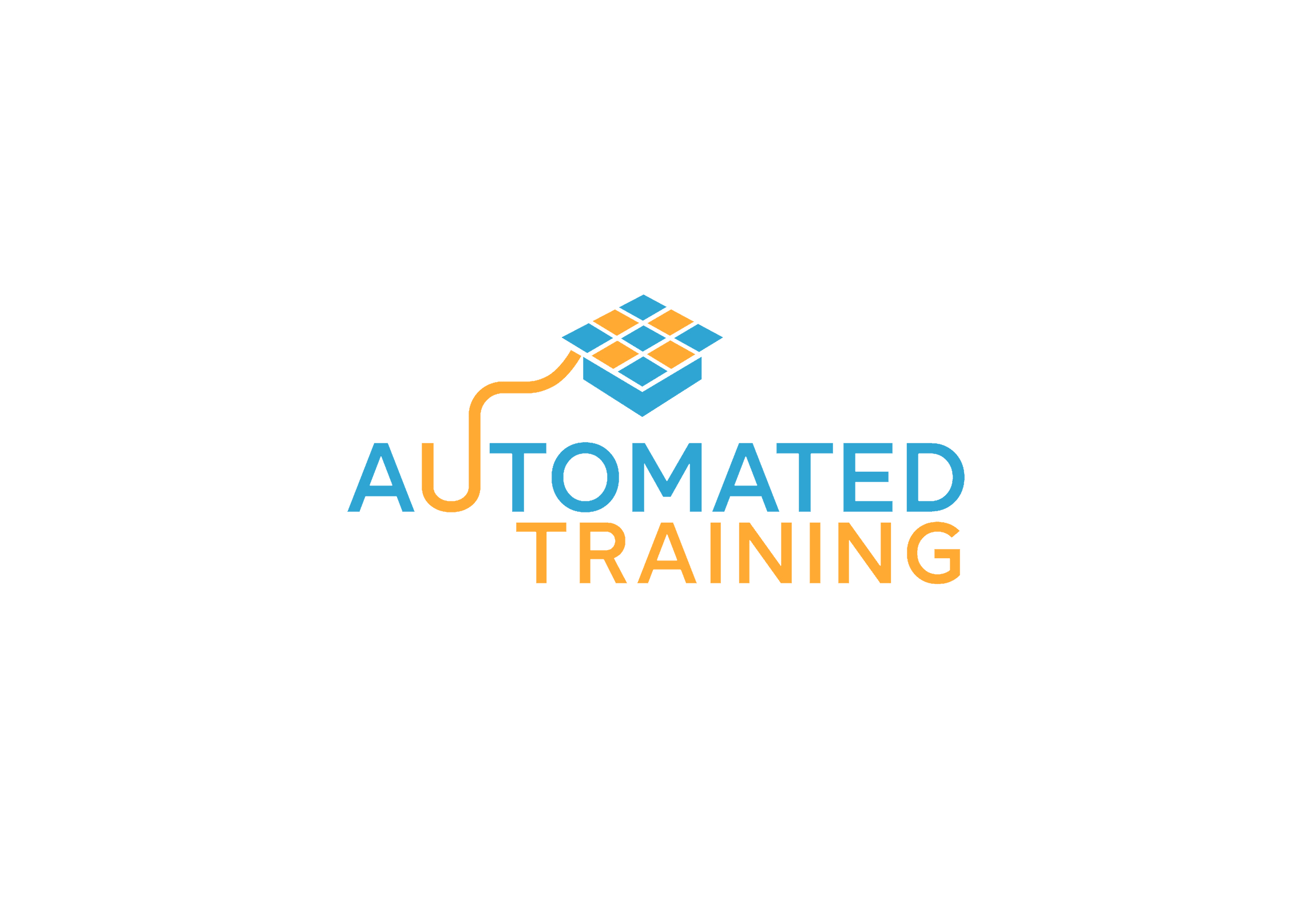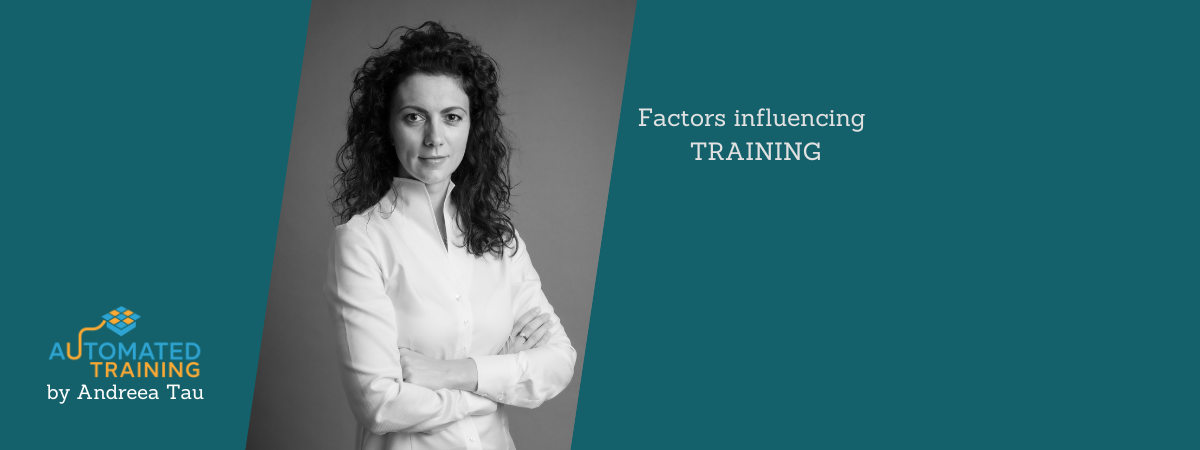Why do we need to set goals for effective trainings?
Because “the failure of training does not lie in not reaching your goal but in having NO goal to reach” (Andreea Tau).
This article discusses in depth one chapter from the article “A presentation is not a training“.
The cognitive goal of this article is to understand and be able to apply Bloom’s taxonomy for setting and realizing the desired learning goals in order to make trainings effective.
- What is easy and what is difficult when it comes to cognition?
- Cognitive goals for effective trainings
- Misconceptions in using Bloom’s taxonomy as goals for trainings
- Issues with having NO cognitive goals for trainings
- Conclusion
Many times, I got this question from my potential clients:
“How do I make the existing training more efficient?”
So, I will answer this question here in detail, but simple enough to be pretty understandable for everybody.
Efficient trainings should be structured and taught from easy to difficult until the desired cognitive level is reached. By easy and difficult is meant a specific cognitive level.
What is easy and what is difficult when it comes to cognition?
Here is my definition of easy: everything I have done already is easy. But there is a much more comprehensive classification of cognition levels done by Benjamin Bloom in the mid-1950s. Bloom categorizes learning objectives according to their complexity, showing in form of a pyramid what means easy and what means complex when it comes to learning.
Benjamin Samuel Bloom was an American educational psychologist. He was also preoccupied with the classification of educational objectives and created a hierarchy of those. He broke down the cognitive domain into six levels. According to the revised edition from 2001, those 6 levels of cognition are: Remember, Understand, Apply, Analyze, Evaluate, and Create.

Learning should be structured from easy to difficult based on these 6 levels. Each level offers higher cognitive performance. And higher levels in the hierarchy include the lower ones. In order to be able to understand, you have to be able to remember. And in order to apply knowledge, you have to understand first. Even Confucius made this level clear with his following affirmation:
“I hear and I forget, I see and I remember, I do and I understand”
The application relies on understanding, and creation relays on all other 5 levels.
Cognitive goals for effective trainings
1.Remember
The first level and the lowest in the cognitive hierarchy is to remember. This implies memorization of facts or methods with or without much understanding and processing.
The simplest example here: every domain comes with its specific terminology, which must be memorized. You can not talk about a subject without its belonging terminology. It is like calling people without saying their names.
To test this cognitive goal in or after the training mainly requires asking the attendee to state, list, or define specific aspects of the learned topic.
2.Understand
To understand means to comprehend the underlying principles, or some ideas, or to decode information. Proving understanding means being able to classify, describe, explain, identify and discuss.
It is worth mentioning here that when it comes to understanding there 2 types of learners: “rule learner” and “example learner”. The “rule learner” tends to abstract the underlying principles that differentiate the examples being studied. And if later on, they find an unfamiliar case, they apply the rules as a means to classify it. While “example learners” tend to memorize rather the examples more than the underlying principles. And when those encounter an unfamiliar case, because they lack a grasp of the rules to classify it, they generalize from the nearest example that they can remember.
As a trainer, the best way to offer understanding for both types of learners is to provide the rules together with examples.
3.Apply
The process of learning is grounded in experience.
Application is the ability to relate knowledge to situations. And this happens only if you understand the working principles and are able to identify, that in a specific situation this specific principle applies.
Education involves refining and modifying old ideas as well as implanting new ones. To prove that this cognition level is mastered, the trainees must be able to implement, execute, and solve (using or not a given model).
4.Analyze
To analyze means to break down the information and look at it from different perspectives. As a consequence of achieving analysis skills, somebody should be able to differentiate, compare, examine, find an analogy, relate, organize etc.
5.Evaluate
The word ‘evaluation’ refers to the act or process of determining the value of something.
Evaluation in learning means assessing the material and methods being thought.
Is a process of delineating, obtaining, and providing useful information for judging decision alternatives. To evaluate means to be able to judge, value, defend, draw conclusions or make decisions.
6.Create
The definition of creation is the act of making or producing something that did not exist before.
Creation is the highest level of cognition and it means using all the levels below to evolve the thought into a new concept. For testing creation ability one should be able to assemble, construct, formulate, and design.
Misconceptions in using Bloom’s taxonomy as goals for trainings
1.In the teaching phase
Bloom’s taxonomy is a classification system, not a learning process. The pyramid does not show the steps of a learning process but only the level of the pursued objectives.
This means a trainer does not violate any principle of learning if he starts a training session with an assessment task, a problem to be solved, or some examples. On the contrary, in this way it can make the course more interesting and engage the audience. This would mean the trainer asks the trainees to evaluate a given situation. It would start at level 5: evaluation. This would require that the learners acquire next an understanding of the backgrounds, apply the principles and analyze the outcome.
To come back to the 2 types of learners (example learners and rule learners), in order to engage the “example learners” a good idea would be to start the training/the course with some interesting examples that have to be analyzed or evaluated.
2.In the testing phase
If in the phase of the test, the trainer asks questions related to the examples that were presented during the course, he actually proves only the lowest cognitive level: remembering and nothing else.
Even if he asks the trainees to solve a problem, that is very similar to the one solved during the training, he actually asks the trainees to reproduce the solution of the problem and not to find a solution for a new problem. Again the tested cognitive level is remembering.
Issues with having NO cognitive goals for trainings
1. One of the issues in ineffective trainings is that the trainer does not set cognitive goals for trainings before creating the training’s content. The problem that arises here is that the content itself does not support reaching the goal. It misses the trigger words, the retrieval cues that help the trainee identify how he has to focus on that idea.
3. If there is no training cognitive goal to be achieved then this is not tested in the testing phase. The question and their formulation in tests and quizzes do not contain the dedicated terminology.
If the trainer didn’t define a cognitive level to be reached, then he will not use the related questions in the tests. As mentioned above, for the cognitive level understanding, the questions shall be formulated with: “classify, describe, explain, identify or discuss topic X”.
2. The cognitive goals are also not clearly formulated for the attendees at the beginning of the training. When the trainee does not know how should she be able to operate with the given knowledge, she does not attend to the details that are important for that specific cognitive goal.
Conclusion
None of the technical trainings that I took part in specified the cognitive training goals in the beginning. And of course, did not test them in the quizzes or tests.
Is it because in internal technical trainings the focus of a trainer is to bring the employees to the level of being able to apply the knowledge in their projects?
Or because the trainers don’t know those levels?
Internal trainers in corporations and big companies are not pedagogs but highly skilled technical people with great technical and project experience. Due to their great expertise, they are put (more or less volunteer) in front of new employees to teach them how to do the job. They have valuable technical content but this has to be pedagogically improved to be also cognitively valuable.
“The better you know something, the more difficult it becomes to teach it” (Eric Mazur)
In conclusion, before going out to teach anybody anything, before even creating the content that you plan to teach, reflect upon those levels of cognition, and define the learning goals of your training. And maybe the learning goal of each chapter of your training, in case different chapters have different cognitive goals to be achieved.
And then talk accordingly. Present the topics in the appropriate order and with dedicated words to reach the foreseen training goal. Make sure you teach not only present. Training is not a presentation! The purpose of training is to teach and the purpose of a presentation is to inform. Keep this in mind!
In case you want to make your trainings efficient have them checked and “corrected” in regards to the cognitive goal you have foreseen. AUTOMATED TRAINING can support you in this matter.


